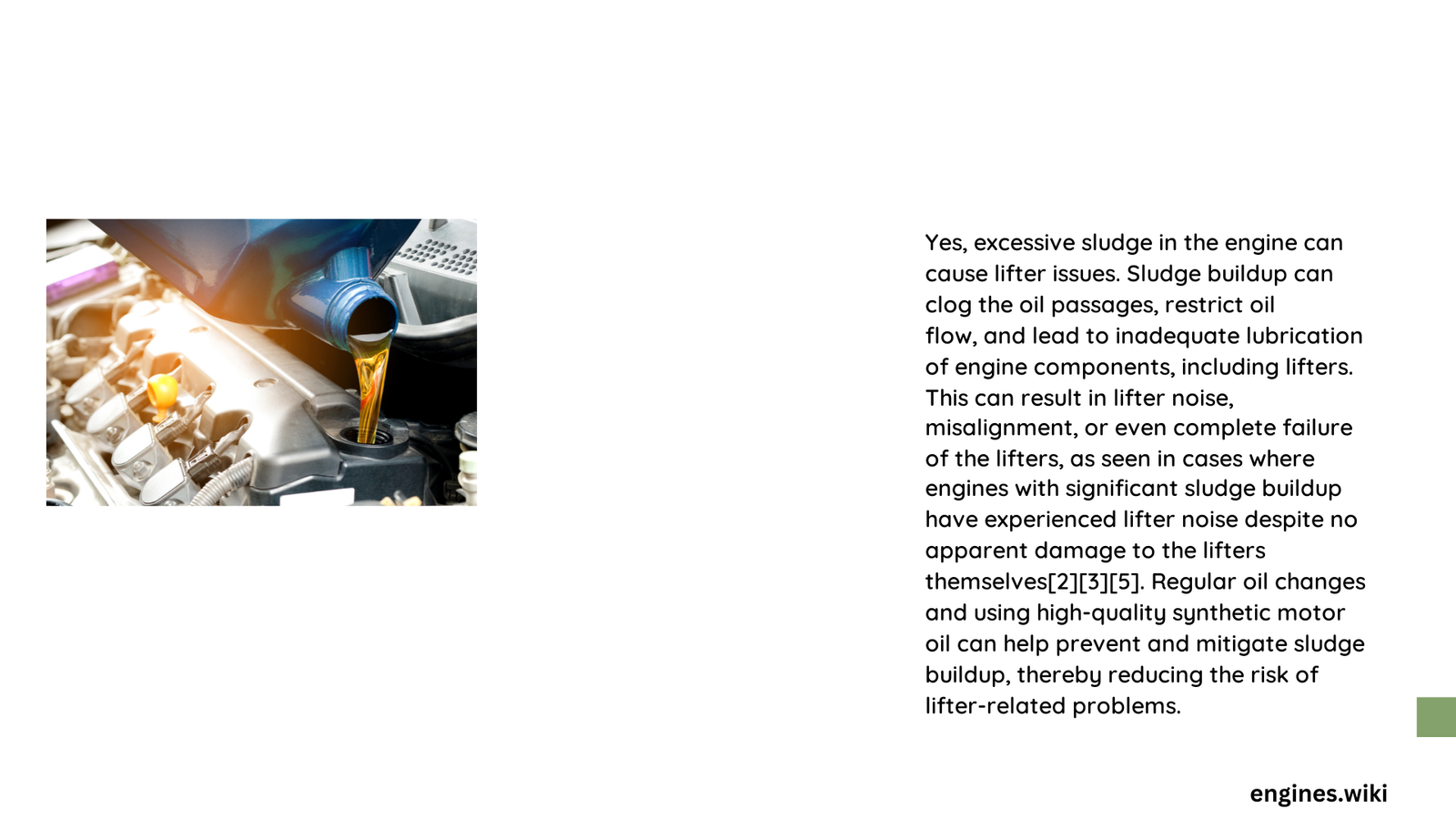Engine sludge represents a critical mechanical threat that can systematically compromise hydraulic lifter functionality, potentially causing significant performance degradation. Excessive sludge accumulation obstructs critical oil passages, preventing proper lifter operation and generating distinctive mechanical symptoms that range from subtle ticking noises to complete lifter failure. Understanding the intricate relationship between sludge buildup and lifter performance is essential for proactive vehicle maintenance and preventing costly engine repairs.
What Causes Engine Sludge Accumulation?
Engine sludge develops through multiple interconnected mechanisms:
- Contaminated Oil Breakdown
- Infrequent Oil Changes
- Low-Quality Motor Oil
- Extended Driving Intervals
- High-Temperature Engine Operations
How Does Sludge Impact Lifter Functionality?
Sludge directly interferes with lifter performance through several critical pathways:
- Oil Passage Blockage
- Prevents hydraulic lifter oil circulation
- Reduces lubrication effectiveness
-
Increases mechanical friction
-
Pressure Reduction
- Diminishes oil pressure transmission
- Compromises lifter responsiveness
- Creates inconsistent valve timing
What Are the Symptoms of Sludge-Related Lifter Issues?

| Symptom | Severity | Potential Consequence |
|---|---|---|
| Ticking Noise | Mild | Potential Lifter Wear |
| Reduced Performance | Moderate | Engine Power Loss |
| Complete Lifter Failure | Severe | Engine Reconstruction |
Can Sludge Be Effectively Removed?
Sludge removal requires strategic intervention:
- Professional Engine Flush
- Chemical Cleaning Solutions
- Regular Maintenance Protocol
- High-Quality Oil Replacement
What Prevention Strategies Exist?
Preventing sludge accumulation involves:
- Consistent Oil Change Schedule
- Using High-Quality Synthetic Oils
- Regular Engine Inspections
- Monitoring Driving Conditions
Technical Recommendations
- Perform oil changes every 3,000-5,000 miles
- Use manufacturer-recommended oil viscosity
- Implement annual engine diagnostic checks
- Address minor issues before they escalate
Potential Repair Costs
Lifter issues caused by sludge can result in significant expenses:
- Minor Repair: $500 – $1,500
- Moderate Repair: $1,500 – $3,000
- Complete Engine Overhaul: $3,000 – $7,000
Expert Insights
Professional mechanics consistently emphasize that proactive maintenance represents the most cost-effective approach to preventing sludge-related lifter complications.
Conclusion
Would too much sludge in engine cause lifter issue? Unequivocally, yes. Sludge represents a progressive, destructive force capable of systematically compromising engine performance and lifter functionality.
Recommended Actions
- Schedule immediate professional inspection
- Implement rigorous maintenance protocol
- Replace compromised components promptly
Reference:
– SAE International Lubrication Standards
– ASE Automotive Maintenance Guidelines
– Society of Automotive Engineers Research
